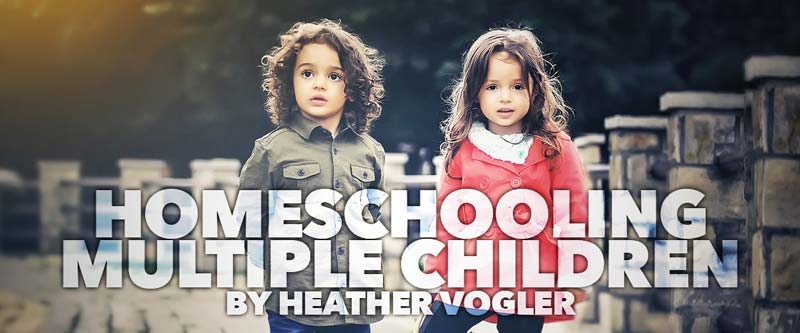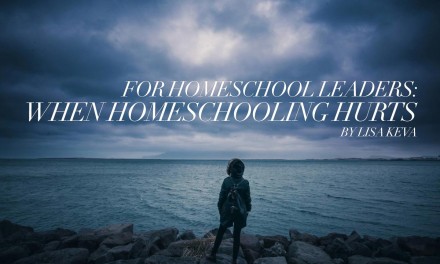Like many parents, I went full force when it came to homeschooling my first child. When the second one came into the picture, the challenge was learning how to properly divide my attention between them while being sure they were both effectively learning. Then throw in child number three, and just recently, we welcomed number four! Can this really work? Can I successfully teach multiple children of differing ages? Absolutely! Here are a few ways that we are able to accomplish this endeavor in our home.
Combine Subjects
It seemed like I was homeschooling, all day long. What was I doing wrong? It wasn’t until I realized that not all subjects have to be taught separately to each child that my days began to run more smoothly. It really is okay to teach the younger kids right along with the older ones! It hit me when I asked my oldest son a history question and when he didn’t know the answer, his younger brother surprisingly came up with the correct answer! All this time I thought he was diligently working on his math worksheets while he was actually secretly listening in on his older brother’s history lesson. At this point, I decided to save time and energy by joining forces and bringing all the kids together for certain subjects. I generally teach age appropriate subjects such as math, phonics and reading separately so each child can have my full attention. When it comes to history, science, Bible and memory work, we do these together. This has saved our homeschool! The kids enjoy working together and the younger ones pick up more than I could ever imagine! Apologia and My Father’s World allow for this type of flexibility throughout their curriculum, making sure all the needed educational elements are covered throughout their lessons so parents don’t need to fear that their children are “missing out” on any one topic. Apologia, specifically is extremely thorough and exhaustive but entertaining and hands-on at the same time! We now are able to finish our day much earlier and I actually have time in the afternoons to get a handful of chores done.
Get Organized
Finding a new homeschool organizational method gets me excited. Finally, I can take a deep breath knowing that my days will run smoother. That is, until we get a few weeks into it and I feel all cluttered again! Each parent needs to find what method will work for their family. Once you find out what works for you, go with it! Don’t worry about what everyone else is doing because what works for your friend’s kids might not work for yours. Next time you’re tempted to switch things around, look at the ages of your children. For example, if they aren’t ready to work independently then maybe the concept of workboxes aren’t for them yet! Keep your expectations realistic and age appropriate. Remember, you don’t necessarily need to spend hundreds of dollars on wall to wall filing cabinets in order to be organized. I simply hang a large pocket chart on the wall. Each pocket is labeled with the child’s current subjects. Each day they can find their work in these pockets. They can visually see how much independent work still needs to be completed for the day. It gives them a goal to strive for each day. Simple, inexpensive, easy and to the point!
Interruption rule
I’m pretty sure I would have lost my mind by now if I hadn’t established this rule. When a child wants to speak to me while I am teaching another student, they must gently place their hand on me and wait for me to acknowledge them . This works wonders. I can actually finish explaining a math problem or a new language rule without losing my train of thought! There is nothing worse than trying to explain a new concept that actually requires some thought and a sibling whines or yells from across the room! All that happens is, I get frustrated and confused while the child I’m working with learns nothing. Once we established the interrupt rule in our homeschool, structure, peace and sanity followed!
Computer Time
YouTube playlists have become a lifesaver in our home. Once in a while, I will create a playlist of short videos related to what my children are studying. If I have to focus on a specific subject with one child for a while, then another child can watch their playlist. Videos may include phonics rules for little ones or a song teaching the planets for an older child. Or, if I have chosen to use an online program for a certain subject, then I make sure to schedule that child to work independently on the computer during a more teacher intensive subject for another student.
Teaching multiple students can happen! Sure, stressful days will pop up once in a while but remember the reason you began homeschooling in the first place and you are certain to find a routine that brings peace to your home!





